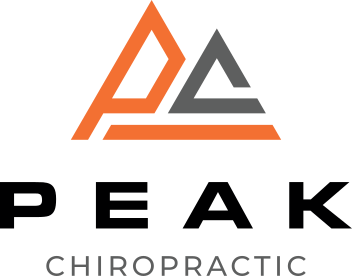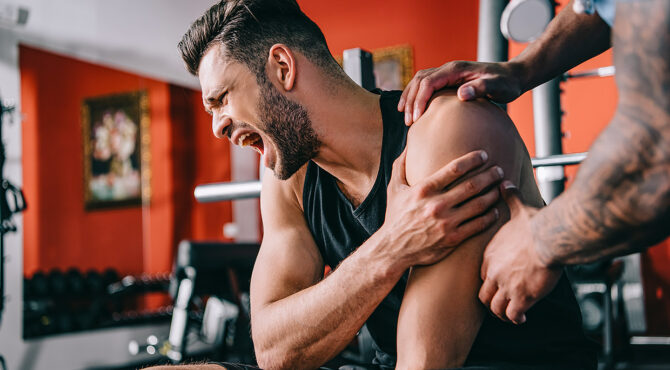You know that flexibility plays an essential role in your overall health and performance, but have you considered the most effective care solutions to enhance it? From dynamic stretching to innovative therapies like myofascial release, there are numerous strategies that can specifically target your needs. It's not just about how far you can stretch; it's about integrating these techniques into your daily routine for sustainable results. As you explore these methods, you'll find surprising benefits that extend beyond mere flexibility. What could these solutions mean for your well-being?
Importance of Flexibility
Flexibility plays an essential role in your overall health and well-being. It's not just about being able to touch your toes or do a split; it impacts many aspects of your daily life. By improving your flexibility, you enhance your range of motion, making everyday activities easier and more enjoyable.
Whether you're reaching for something on a high shelf or getting out of bed, better flexibility can help prevent strains and injuries.
Moreover, flexibility contributes to better posture. When your muscles are flexible, they can support your spine more effectively, reducing the chances of back pain and discomfort.
With improved posture, you'll stand taller and feel more confident. You might even notice a boost in your energy levels, as proper alignment allows for better circulation and oxygen flow throughout your body.
Additionally, flexibility is vital for athletic performance. If you engage in sports or any physical activities, you'll find that increased flexibility can enhance your performance.
It allows for more efficient movement patterns, enabling you to run faster, jump higher, and perform better overall. Even if you're not an athlete, being flexible can improve your overall fitness level and make workouts more effective.
Finally, maintaining flexibility can contribute to mental well-being. The physical benefits often translate into a sense of accomplishment and reduce stress levels.
Stretching Techniques
When it comes to improving your flexibility, understanding stretching techniques is key.
You'll find that dynamic stretching can prepare your muscles for activity, while static stretching helps increase your range of motion post-workout.
Let's explore how each method can benefit your flexibility journey.
Dynamic Stretching Benefits
Dynamic stretching offers a powerful way to enhance your flexibility and prepare your body for physical activity. Unlike static stretching, dynamic stretches involve movement, which helps increase your heart rate and blood flow to your muscles. This prepares your body for exercise and helps prevent injuries.
When you incorporate dynamic stretching into your routine, you engage various muscle groups through controlled movements. This not only improves your flexibility but also enhances your strength and coordination. You'll notice that your range of motion increases, making it easier to perform exercises or sports movements efficiently.
Additionally, dynamic stretching can help improve your overall athletic performance. As you warm up your muscles and joints through these dynamic movements, you'll find that you feel more agile and ready to tackle your workout or competition.
Some examples of dynamic stretches include leg swings, arm circles, and walking lunges. Integrating these into your warm-up can make a significant difference in how you feel during your workout.
Static Stretching Techniques
Static stretching is an essential component of any flexibility routine, allowing you to lengthen your muscles while promoting relaxation. This technique involves holding a stretch for a fixed duration, typically between 15 to 60 seconds, targeting specific muscle groups.
To get started, find a comfortable position and focus on one muscle group at a time. For example, to stretch your hamstrings, sit on the ground with one leg extended and the other bent. Reach toward your toes, feeling the stretch along the back of your thigh. Remember to breathe deeply and relax into the stretch; never force your body beyond its limits.
Another effective stretch is the quadriceps stretch. Standing on one leg, pull your other heel towards your glutes, keeping your knees together. This not only stretches the front of your thigh but also improves balance.
Incorporate these static stretches after your workouts or during recovery days to enhance flexibility and prevent muscle stiffness. Regular practice will help you achieve greater range of motion and overall muscle health.
Strength Training Benefits
Strength training isn't just about bulking up; it plays an essential role in increasing your muscle strength.
By focusing on strength, you also enhance joint stability and improve your posture alignment, which can lead to better overall flexibility.
Let's explore how these benefits can transform your physical performance and daily activities.
Increased Muscle Strength
When you immerse yourself in strength training, one of the most rewarding benefits is the boost in muscle strength you'll experience. This increase in strength not only enhances your physical capabilities but also contributes to your overall well-being.
Here are three key advantages of improved muscle strength:
- Enhanced Performance: Whether you're lifting groceries, running, or playing sports, stronger muscles make everyday activities easier and more efficient.
- Increased Metabolism: Muscle tissue burns more calories than fat, even at rest. By building muscle, you'll rev up your metabolism, helping you maintain a healthy weight.
- Improved Confidence: As your strength grows, so does your self-esteem. You'll feel more empowered to tackle challenges, both in and out of the gym.
Incorporating strength training into your routine is essential for anyone looking to boost their muscle strength.
It's about more than just aesthetics; it's a pathway to a healthier, more active lifestyle.
Enhanced Joint Stability
Building strength through training greatly enhances joint stability, making your body more resilient during physical activities. When you engage in strength training, you increase the strength of the muscles surrounding your joints. This added muscle support helps to stabilize your joints, reducing the risk of injuries during movement. Stronger muscles can absorb impact and provide better control, whether you're running, jumping, or lifting weights.
Additionally, improved joint stability allows for more efficient movement patterns. You'll notice that activities you once found challenging become easier as your joints function effectively. This enhanced stability can also lead to better balance, which is essential not just for athletes but for everyone, especially as you age.
Incorporating exercises that target key muscle groups—like squats, lunges, and resistance training—can greatly contribute to your joint stability. As your strength improves, so will your confidence in physical activities, allowing you to push your limits safely.
Improved Posture Alignment
Enhanced joint stability not only protects your body during physical activities but also plays a significant role in improving posture alignment.
When your joints are stable, it allows your body to maintain proper alignment, reducing the risk of discomfort and injury.
Here's how strength training can enhance your posture:
- Strengthens Core Muscles: A strong core supports your spine, helping you maintain an upright position throughout the day. This reduces slouching and promotes a natural posture.
- Balances Muscle Groups: Strength training addresses muscle imbalances that often lead to poor posture. By focusing on both the front and back muscle groups, you create a balanced physique that encourages better alignment.
- Increases Flexibility: As you build strength, you also enhance your flexibility. Improved flexibility in key areas, like the hips and shoulders, allows for a more natural alignment, making it easier to stand tall and move freely.
Innovative Therapies
Innovative therapies are continually emerging, offering fresh approaches to boost your flexibility. One of the most exciting developments is the use of assisted stretching techniques. In these sessions, a trained therapist helps you stretch your muscles beyond your usual limits, enhancing your range of motion and promoting muscle recovery. You might find this method particularly effective if you struggle to reach certain flexibility goals on your own.
Another promising approach is myofascial release therapy. This technique focuses on relieving tension in the fascia, the connective tissue surrounding your muscles. By applying gentle pressure to specific points, you can alleviate tightness and improve overall flexibility. Many people report significant improvements in their mobility after just a few sessions.
You can also explore the benefits of proprioceptive neuromuscular facilitation (PNF) stretching. In PNF, you engage in a series of contractions and stretches that activate your muscles and enhance flexibility. This method combines both passive and active movements, often yielding quicker results than traditional static stretching.
Additionally, consider incorporating dynamic stretching routines into your warm-up. These involve controlled movements that increase your heart rate and blood flow to your muscles, preparing them for activity. They're particularly useful before workouts or sports.
Finally, don't overlook the role of technology in innovative therapies. Wearable devices and apps can track your flexibility progress, helping you stay motivated and informed about your improvement.
Mindfulness and Relaxation
How can mindfulness and relaxation techniques improve your flexibility? By cultivating awareness and reducing stress, these practices can enhance both your physical and mental flexibility. When you approach your body with a calm mind, you're more likely to listen to its needs and respond appropriately, leading to better overall performance.
Here are three key benefits of integrating mindfulness and relaxation into your flexibility journey:
- Improved Body Awareness: Mindfulness helps you connect with your body. You'll notice areas of tension or stiffness, allowing you to focus on those spots during your stretching routine. This heightened awareness can lead to more effective stretches and prevent injury.
- Reduced Stress and Tension: Stress can tighten muscles, making it harder to achieve greater flexibility. By practicing relaxation techniques, such as deep breathing or meditation, you can release built-up tension. This not only enhances your flexibility but also promotes a sense of well-being.
- Enhanced Focus and Concentration: Mindfulness fosters a greater ability to concentrate, enabling you to commit fully to your flexibility exercises. By being present in the moment, you'll find it easier to hold stretches longer and with better form, maximizing your results.
Incorporating mindfulness and relaxation into your routine is more than just a nice addition; it's a fundamental approach to revealing your body's potential.
Embrace these techniques, and you'll likely discover a newfound level of flexibility and ease in your movements.
Creating a Flexibility Routine
Building on the mindfulness and relaxation techniques you've embraced, creating a flexibility routine can be a rewarding and structured way to enhance your range of motion. Start by setting aside dedicated time for your routine, ideally at least three times a week. Consistency is key, so choose a schedule that fits seamlessly into your lifestyle.
Begin your routine with a warm-up to prevent injury. Simple movements like arm circles, leg swings, or light jogging can get your blood flowing. Once you're warmed up, focus on specific stretches that target major muscle groups. Consider incorporating dynamic stretches, such as lunges with a twist, to prepare your muscles and joints for more intense stretches.
After your dynamic warm-up, shift into static stretches, holding each position for 15 to 30 seconds. Pay special attention to areas that feel particularly tight. For a thorough approach, include stretches for your hamstrings, quadriceps, hip flexors, shoulders, and back. Remember to breathe deeply, allowing your body to relax into each stretch.
To keep your routine engaging, mix in various stretching techniques like yoga or Pilates. You can also use props like resistance bands or yoga blocks to assist in deeper stretches.
Finally, track your progress by noting improvements in flexibility and range of motion over time. Stick with it, and you'll soon feel the benefits in your everyday activities and overall well-being.
Conclusion
To boost your flexibility, embrace a holistic approach that combines dynamic and static stretching, strength training, and innovative therapies. Don't forget to incorporate mindfulness practices to enhance your body awareness and reduce tension. By creating a personalized flexibility routine, you'll not only improve your range of motion but also support overall muscle health. Start today, and you'll soon notice a significant difference in your flexibility and well-being. Keep moving, stay consistent, and enjoy the journey!



